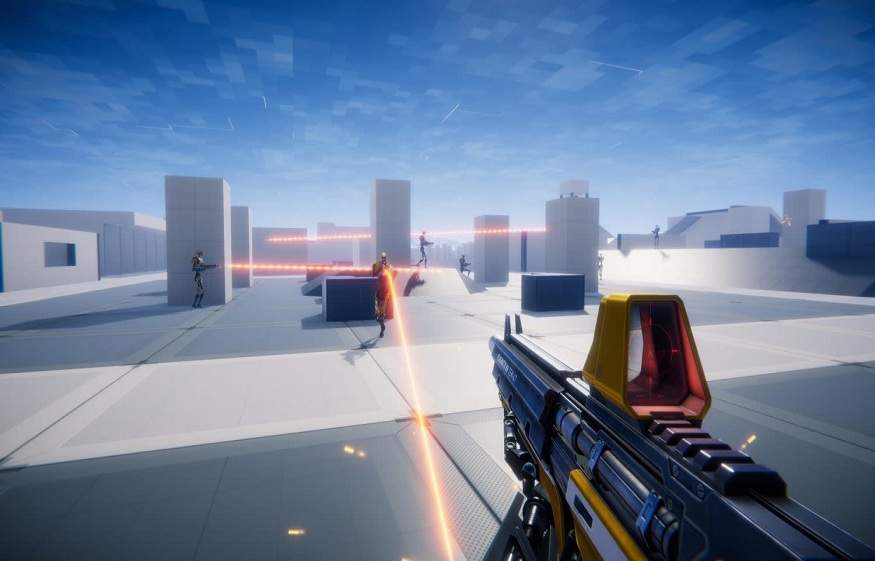Creating a Unity game is a great way to make your digital world come to life. It’s an incredibly powerful and versatile platform for creating visually stunning 3D games that people from all walks of life can enjoy. This blog will guide you through the basics of building a Unity game, from setting up the scene and environment to scripting events and behaviours and testing your creation in real time.
With this guide, you’ll have the tools and knowledge necessary to start crafting your own Unity game. So let’s get started! Grab your tools, get ready to create something amazing, and let’s make some games!
Let’s get started.
1. Prerequisites for Development
The first step in game development is to ensure you have the necessary prerequisites. This includes having a powerful computer, an up-to-date graphics card and the latest version of Unity installed on your system. You should also ensure that you have sufficient memory and storage to build and run your game.
2. Planning
Once you have the necessary prerequisites, the next step is to plan your game. This involves deciding on your game’s overall theme and structure, along with a list of features and elements you would like to include. Once you have finalized this plan, you can move on to creating a layout of the assets and levels in your game. Unity3d game development services are beneficial in this step as they can help you create a well-structured game layout.
3. Designing Assets
The third stage in building a Unity game is designing assets. This includes characters, backgrounds, objects and other features used within the game. All assets should be carefully designed considering their purpose within the game and how they will look when rendered in-game.
4. Coding
Once all of your assets are ready, the next step is coding. Unity provides developers with a wide range of tools and features which can be used to create game logic and behaviour. This includes scripting components in C# which allows you to control how objects within the game interact with each other. There are also more advanced features such as AI algorithms, physics engines, and multiplayer networking capabilities.
5. Testing
Before your game is released, it’s important to ensure everything works correctly by testing it extensively. This should involve testing all aspects of the gameplay, from single-player modes to online playability. It’s important to eliminate any potential bugs or issues which may arise before releasing the game publicly.
6. Deployment
The final step in creating a Unity game is deployment. This involves packaging up your project files and building the game ready for distribution via an app store or website. The Unity engine provides developers with an array of options when it comes to deploying their games, including support for AR/VR platforms, consoles, and PCs. There are also features that allow developers to monetize their projects through advertisements or micro-transactions.
Moreover, a game development company can also help in the deployment process by configuring the project files and ensuring everything is in order before launching.
Once your game has been published, it’s important to continue monitoring user feedback and updating the game accordingly. Regular updates are often necessary to maintain a healthy audience and to keep the game fresh. In addition, developers should also monitor analytics data to understand better how players engage with their games. This will allow them to make changes to keep users engaged and improve their overall experience.
Tips to Build a Unity Game
- Start Small: It’s important to start with small projects and gradually expand the scope of your game as you become more familiar with the tools and features of Unity. This will help you build confidence in developing your game while avoiding becoming overwhelmed by too big of a project.
- Design First: Before jumping into building, it’s vital to create a detailed design document that outlines all aspects of your game, such as mechanics, story, art style etc. This serves as a roadmap for development and helps ensure that all assets are created with a consistent theme or style in mind.
- Get Familiar with Assets: Knowing how to use assets effectively is key when creating games in Unity. This includes understanding how to use the asset store to your advantage and learning how to import, set up and configure assets such as 3D models, textures and audio files.
- Utilize Scripts: Scripting is an essential part of game development in Unity, allowing you to create complex mechanics that bring life to your game. It’s recommended that developers become familiar with scripting languages such as C# and practice writing scripts for simple objects before attempting bigger tasks.
- Test & Debug: Testing and debugging are important steps during development that should be noticed. Be sure to test your game regularly throughout development to identify bugs or inconsistencies early on before they become bigger problems down the line.
The Bottom Line
Unity game development can be a great way to create custom games. As you gain experience and confidence in creating full-fledged games in Unity, you’ll start to be able to take advantage of more advanced features like scripting and shaders. Ultimately, Unity is one of the most popular game engines used today due to its flexibility, scalability, ease of use and a wide array of resources available for developers.
With patience and dedication, you can create amazing games using Unity – remember to keep your users in mind when designing your game!

